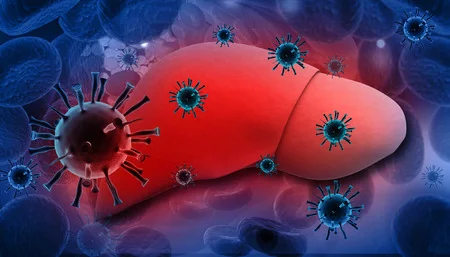Viral hepatitis A, referred to as hepatitis A, is caused by hepatitis A virus (HAV), an infectious disease mainly caused by inflammatory lesions of the liver and mainly transmitted through the fecal-oral route. It is clinically characterized by fatigue, loss of appetite, hepatomegaly, and the main manifestation is abnormal liver function. there is jaundice in some cases and acute hepatitis, and asymptomatic infection is common. The disease can occur at any age, but mainly in children and adolescents. The clinical symptoms of hepatitis A in adults are generally more severe than those in children. Winter and spring are often the peak periods of hepatitis A incidence. The course of the disease is self-limiting and non-chronic. It is extremely rare to cause acute severe hepatitis. With the use of inactivated vaccines in the world, the prevalence of hepatitis A has been effectively controlled.
Etiology
Hepatitis A virus is a member of the picornaviridae family, a genus of hepadnaviruses. HAV resistance is strong, can withstand 56 ℃ for 30 minutes, room temperature for a week. It can survive for 30 days in dry feces at 25°C and for several months in shellfish, sewage, fresh water, sea water and soil. This stability is beneficial for the transmission of HAV through water and food. It can also bear high pressure steam (121°C, 20 minutes), boil for five minutes,UV exposure, formalin (1:4000, 37℃ for 72 hours), potassium permanganate (30mg/L, 5 minutes), iodine (3mg/L, 5 minutes), chlorine (free chlorine 2.0-2.5mg/L, 15 minutes), and 70% alcohol at 25℃ for 3 minutes can effectively inactivate HAV.
Pathogenesis
After HAV enters the body through the mouth, it enters the bloodstream through the intestinal tract, causing viremia, and reaches the liver after about a week, and then it is subsequently excreted through the bile into the intestinal tract and appears in the feces. Fecal detoxification can be maintained for 1-2 weeks. The main organ invaded by the virus is the liver, and the pharynx and tonsils may be the sites of extrahepatic reproduction of HAV. The mechanism of HAV-induced hepatocyte damage is not yet clear. It is generally believed that HAV does not directly cause hepatocellular lesions, and liver damage is caused by the immunopathological reaction of HAV-infected hepatocytes.
Clinical manifestations
The average incubation period of hepatitis A is 30 days (5-45 days). The main manifestation is acute hepatitis, which is divided into acute jaundice type and acute anicteric type. The typical acute jaundice type hepatitis A is characterized by acute onset, stomach cold, fever, malaise, loss of appetite, greasy disgust, nausea, vomiting, abdominal pain, liver pain, diarrhea, urine color gradually deepened and became dark brown in the early stage. Fever, headache, and upper respiratory tract symptoms are the main manifestations in a few cases, which are easily misdiagnosed as upper respiratory tract infection. Before the appearance of jaundice, the early gastrointestinal symptoms are obvious and easy to be misdiagnosed as gastritis or indigestion. With the progress of the disease, the subjective symptoms of the appeal were relieved, and the fever subsided, but the urine color continued to deepen, and the eyes, sclera, and skin appeared yellowish staining, which reached a peak in about 2 weeks. It may be accompanied by light stool color, skin itching, liver enlargement, and fullness, tenderness and percussion pain, splenomegaly in some patients, and the above symptoms can last 2-6 weeks. In the recovery period, the jaundice gradually subsided, the symptoms were relieved to disappear, the liver and spleen were retracted, and the liver function gradually returned to normal. The total course of the disease is about 2-4 months.
Disease prognosis
Hepatitis A is self-limiting disease, and the treatment is based on general and supportive care, supplemented by appropriate drugs, avoiding alcohol consumption, fatigue and the use of liver-damaging drugs. Emphasis is placed on early bed rest, and activities can be gradually increased until the symptoms are significantly reduced, based on the principle of not feeling fatigued. Acute jaundice hepatitis should be treated in hospital isolation. The isolation period (3 weeks after the onset of the disease) is complete and the clinical symptoms disappear. Serum total bilirubin is below 17.1umol/L, and ALT is below 2 times the normal value, and can be discharged from the hospital, but should still rest for 1-3 months after discharge. Regular review should be conducted six months to one year after resuming work.



